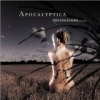Make the Introductions, Josh
There are a number of benefits afforded to extended and long-term narratives. The benefit is felt more strongly in the written word than in movies as far as series tend to go, frequently because of a singular author. Of course moving from the page to the screen can pass on those benefits. I have discovered a really nice benefit while writing the posts for the On Dark Rhoads™ blog that I did not anticipate, as much as it makes sense. I can introduce concepts, characters, and any idea I might like to add into the narrative at any point, without getting straight to the point of why it is there. I can hint at its importance, or I can say nothing and just let it stand. Silence on the point can add its own mystique as well. Then I can come back to it when the time is right and the savvy readers will know they've seen it before and have the kind of aha moment that just wouldn't occur or be possible any other way.
This kind of foreshadowing is really appealing from this side of the process. It may not be quite so exciting for the reader, especially previous to the reveal. I just recently introduced a pretty important element to Josh's story in just such an offhand way. I'd like to think that it is mysterious too. People will read it and tell themselves that this simple, almost innocuously boring update has meaning that is not readily important, otherwise why is it there. The question then becomes can I, or any author in a similar situation, have superfluous posts? The answer must be yes. For starters, the idea of a red herring is reliant on giving information that is not actually important, at least to the true advancement of the story's main conflict, and to the characters beyond the time that it has proven false. By the way, the revelation was that Josh does vote for the hidden-evil political party.
Mood: dramatic.
Music: Street Justice by Twisted Sister and Top Jimmy by Van Halen.
 Or get MP3s. | Buy these at Amazon.com Click Images to Buy CDs |  Or get MP3s. |
Labels: blogging, conflict, foreshadowing, introductions, misdirection, mystery, On Dark Rhoads, plot, politics, revelation, writing
















